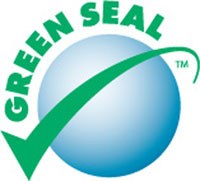Environmentally friendly products are hot these days, and virtually every paint manufacturer now carries a line of low VOC paints. How do low VOC paints impact the environment and your health? Are they really as “green” as everyone says they are?
Volatile Organic Compounds, or VOCs, are unstable, carbon rich compounds that are released as in a process called off-gassing. VOCs are what makes paint smell so chemical-y. They react with other elements in the air to create ozone, which is the main ingredient in greenhouse gas. Ozone contributes to several health problems, including headaches, dermatitis, respiratory difficulty, and eventually, permanent lung damage. The most severe off-gassing occurs during and immediately after painting; approximately 50% of a paint’s VOCs will be released within the first year. The remainder, however, can take years to dissipate.
Pregnant women, babies and children, and people with chemical sensitivities, asthma, and other respiratory problems are most affected by off-gassing.
Solvents (the chemicals that make paint wet and easy to apply) are the main source of VOCs; many pigments also contains small amounts of these harmful chemicals. In general, oil-based paints are higher in VOCs than latex ones, and fast drying formulas contain more VOCs than their conventional cousins.
Low VOC paint definitions vary, depending on who you ask. The term is regulated by the United States government, and in order to carry the low VOC label, latex and flat finish paints must contain no more than 250 grams of VOC per liter of paint. Oil based paints are allowed to contain up to 350 g/L.
Most reputable paint manufacturers hold themselves to higher standards than that; well-known brands typically contain just 50 g/L. However, other chemical additives are still a major concern, even when there are fewer paint fumes. For the greatest health and environmental benefits, carefully read labels or choose paint that bears the green seal. Green Seal is an independent non-profit that establishes guidelines for eco-friendly products. To earn the seal, primers, floor paints, gloss, and semi-gloss formulations must contain no more than 100g/L of VOCs. Flat finish paints and reflective wall coatings must contain under 100 g/L.
The green seal also ensures that paint is free of many harmful additives besides VOCs:
- Heavy metals, such as cadmium
- Formaldehyde
- Dangerous aromatics such as benzenes and toluene, and napthalene
- Phthalates
- Halomethanes
- Chlorinated ethanes and ethylenes
- Ketones
Many of these ingredients are known to cause cancer, reproductive issues, and birth defects, among other health problems.
 Several paints bearing the green seal are available:
Several paints bearing the green seal are available:
- Acro Pure Interior line Miller Paint Co.
- Armorwall by InPro Corporation
- Earth’s Color Collection Interior line, Yolo Interior line, and Earth’s Color Collection Exterior line by YOLO Colorhouse
- Acry-Plex Interior line by Kelly Moore
- Aura by Benjamin Moore
- Manor Hall line by PPG Pittsburgh Paints
Good quality low VOC paints are readily available and economical. They are easy to apply and provide similar results to conventional products. They definitely do their part to reduce “sick building syndrome” and indoor air pollution, and to reduce the emission of greenhouse gases when used outside. But is this as green as it can get? Not by a long shot.


